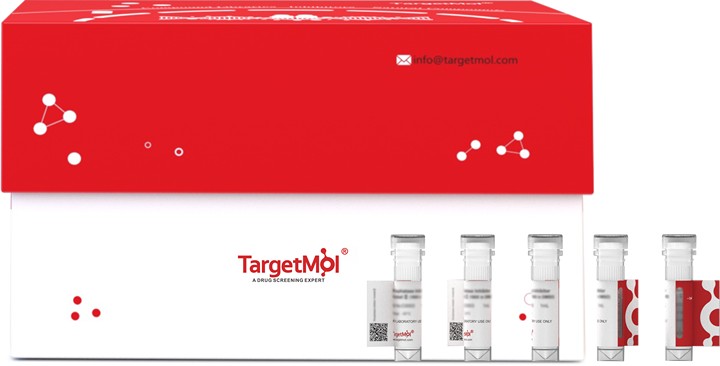Shopping Cart
- Remove All
 Your shopping cart is currently empty
Your shopping cart is currently empty

IFN gamma Protein, Sheep, Recombinant (E. coli, His) is expressed in E. coli expression system with N-6xHis tag. The predicted molecular weight is 20.9 kDa and the accession number is P17773.

| Pack Size | Price | Availability | Quantity |
|---|---|---|---|
| 20 μg | $360 | 20 days | |
| 100 μg | $745 | 20 days | |
| 1 mg | $2,530 | 20 days |
| Biological Activity | Activity has not been tested. It is theoretically active, but we cannot guarantee it. If you require protein activity, we recommend choosing the eukaryotic expression version first. |
| Description | IFN gamma Protein, Sheep, Recombinant (E. coli, His) is expressed in E. coli expression system with N-6xHis tag. The predicted molecular weight is 20.9 kDa and the accession number is P17773. |
| Species | Sheep |
| Expression System | E. coli |
| Tag | N-6xHis |
| Accession Number | P17773 |
| Synonyms | Interferon gamma,IFNG |
| Amino Acid | QGPFFKEIENLKEYFNASNPDVAKGGPLFSEILKNWKEESDKKIIQSQIVSFYFKLFENLKDNQVIQRSMDIIKQDMFQKFLNGSSEKLEDFKRLIQIPVDDLQIQRKAINELIKVMNDLSPKSNLRKRKRSQNLFRGRRASM |
| Construction | 24-166a |
| Protein Purity | > 90% as determined by SDS-PAGE. |
| Molecular Weight | 20.9 kDa (predicted) |
| Endotoxin | < 1.0 EU/μg of the protein as determined by the LAL method. |
| Formulation | Tris-based buffer, 50% glycerol |
| Reconstitution | A Certificate of Analysis (CoA) containing reconstitution instructions is included with the products. Please refer to the CoA for detailed information. |
| Stability & Storage | Lyophilized powders can be stably stored for over 12 months, while liquid products can be stored for 6-12 months at -80°C. For reconstituted protein solutions, the solution can be stored at -20°C to -80°C for at least 3 months. Please avoid multiple freeze-thaw cycles and store products in aliquots. |
| Shipping | In general, Lyophilized powders are shipping with blue ice. Solutions are shipping with dry ice. |
| Research Background | Type II interferon produced by immune cells such as T-cells and NK cells that plays crucial roles in antimicrobial, antiviral, and antitumor responses by activating effector immune cells and enhancing antigen presentation. Primarily signals through the JAK-STAT pathway after interaction with its receptor IFNGR1 to affect gene regulation. Upon IFNG binding, IFNGR1 intracellular domain opens out to allow association of downstream signaling components JAK2, JAK1 and STAT1, leading to STAT1 activation, nuclear translocation and transcription of IFNG-regulated genes. Many of the induced genes are transcription factors such as IRF1 that are able to further drive regulation of a next wave of transcription. Plays a role in class I antigen presentation pathway by inducing a replacement of catalytic proteasome subunits with immunoproteasome subunits. In turn, increases the quantity, quality, and repertoire of peptides for class I MHC loading. Increases the efficiency of peptide generation also by inducing the expression of activator PA28 that associates with the proteasome and alters its proteolytic cleavage preference. Up-regulates as well MHC II complexes on the cell surface by promoting expression of several key molecules such as cathepsins B/CTSB, H/CTSH, and L/CTSL. Participates in the regulation of hematopoietic stem cells during development and under homeostatic conditions by affecting their development, quiescence, and differentiation. |

Copyright © 2015-2025 TargetMol Chemicals Inc. All Rights Reserved.